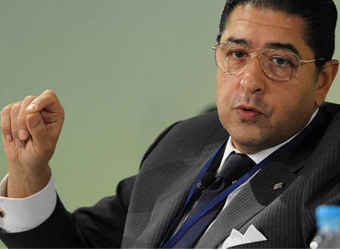In his recent article at The Hill newspaper, high-profile Egyptian banking figure Hisham Ezz Al-Arab writes about the important role played by the Egyptian banking sector.
He began his essay as “We have all begun to notice the slow but steady recovery taking place in Egypt. The utter turmoil of the past three years should have destroyed Egypt, but it did not. Instead, Egypt avoided a major collapse and survived. How? Was it the Egyptian people’s sheer force of will?”
Without question, the Egyptians for thousands of years have overcome seemingly insurmountable threats to their survival. In the latest upheaval, that will was fortified by the resilience of the country’s banks. Led by the Central Bank of Egypt (CBE), the banking sector’s ability to withstand the crippling repercussions from essentially two revolutions, four leaders and three constitutions in three years, not to mention the global financial crisis of 2008, is nothing short of extraordinary.
At a recent speech to a U.S. corporate delegation visiting Egypt, the Central Bank Governor Hisham Ramez reminded us how the banks saved Egypt from collapse. It goes back to the early part of the first decade of this century when the Central Bank led a process of consolidation, privatization, recapitalization and increased foreign ownership. At the same time it implemented a series of regulations, including conservative liquidity requirements, deposit reserves and capital adequacy requirements, all to strengthen the sector. These moves produced banks that were perhaps the strongest, most efficient and most liquid in all of the emerging markets. And so, when the upheaval erupted beginning in 2011, the banking sector stood on solid ground and kept the entire financial industry afloat. Withdrawals were honored, liquidity measures were in place and foreign reserves were held in liquid assets which resulted in no losses upon liquidation. The CBE wisely moved to intervene on the Foreign Exchange which immeasurably helped to restore order in the financial markets.
All indicators confirm the resilience and strength of the banking sector. Capitalization levels are not only adequate, but exceed Basel III requirements. Tier I capital is 11 percent versus a threshold of 6 percent. Common equity stands at 10 percent, versus the 4.5 percent requirement. Confidence in the sector is best reflected in the number of deposits which have grown from EP973 in 2011 to 1.5 billion in October of this year. Local foreign currencies have grown commensurately with a rise from EP465 billion to 607 billion over the same period.
The challenge now for the CBE is to keep the momentum going to maintain growth and price stability. Ramez says the answer is continued regulation, transparency and disclosure to ensure credibility, and financial inclusion. To that end, the CBE has sponsored several important projects. In February of last year, it launched a home loan initiative for affordable housing to address the housing shortage. The next month, it guaranteed foreign currency liquidity upon exit by foreign investors, relaxing restrictions from the 2011 revolution. And in September, it issued Suez Canal Certificates for the New Suez Canal project in which over one million Egyptians participated and over US$8.5 billion was raised in eight business days.
Egypt has reached a critical moment, one where its future will be defined either by years of further turmoil, or alternatively by prosperity, stability, and inclusion. I would argue that the banking sector, led by the CBE, is making it possible for Egyptians to realize the latter. Equally, and importantly, the sector has proved to the world that Egypt has emerged from the darkest of days and is moving forward with grace towards a new Egypt.
Hisham Ezz Al-Arab is the chairman and managing director of Commercial International Bank (CIB), the largest private sector bank in Egypt. He also serves as the chairman of the Federation of Egyptian Banks, the first private sector banker to be elected to this position.





